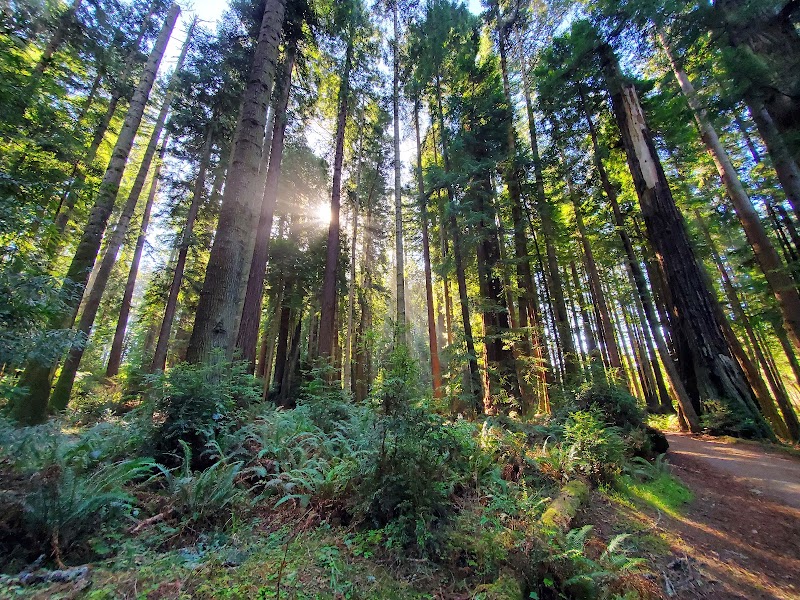
The Kinetic Grand Championship: Eureka’s Wild Ride of Creativity and Grit
The Kinetic Grand Championship in Eureka, California, blends art, engineering, and raw adventure over 42 demanding miles of road, trails, and waterways. This rare human-powered race challenges competitors with shifting terrain and pushes spectators to witness a spectacle of ingenuity and grit.
Stay Hydrated Throughout the Race
The three-day course includes physically demanding stretches with varying temperatures and humidity. Carry ample water and use hydration packs to maintain energy levels.
Wear Durable Footwear
Racers and spectators alike encounter muddy fields, rocky paths, and wet docks. Waterproof, sturdy shoes with good traction are critical.
Plan for Variable Weather
Coastal fog and sudden wind gusts can chill or obscure vision. Layered clothing and wind-resistant outerwear give you flexibility on unpredictable days.
Scout Key Viewing Spots Early
Prime race viewpoints fill quickly. Arrive ahead of time near river crossings or downtown to secure a spot with a clear line of sight.
The Kinetic Grand Championship: Eureka’s Wild Ride of Creativity and Grit
Every two years, the streets and waters of Eureka, California, erupt with a raw, kinetic energy that dares you to join the fray. The Kinetic Grand Championship (KGC) is no typical race. It’s a three-day, 42-mile odyssey of human-powered, sculptural carts battling terrain that challenges every edge of creativity and stamina. From city roads to river crossings and rugged forest trails, KGC champions don’t just move—they wrestle with forces fiercely themselves.
Starting downtown, the event launches in the heart of Eureka, where spectators and racers mingle amid bright contraptions that blend whimsical design and engineering muscle. The terrain quickly changes, pushing craft and teams from smooth pavement to muddy fields, then onto water, where currents test maneuverability. Raised suspension and sturdy wheels become critical allies. Forest trails offer a quieter but no less demanding segment, the trees seeming to lean in, observing how racers navigate roots and narrow paths under dappled light.
The race isn’t just about speed but endurance and adaptability. Over three days, competitors face elevation changes up to 500 feet on some stretches, while sandbars and river rapids demand quick thinking and teamwork. Those waters dare teams forward, sometimes refusing surrender, turning balance and control into a delicate dance. Hydration is non-negotiable. Expect unpredictable weather—fog hugs the coast, wind stirs the bay—making versatile footwear and layered clothing vital.
For those considering attendance or participation, timing your visit during the event (usually in mid-June) offers a rare blend of adrenaline and community spirit. Budget extra time for exploring Eureka’s nearby natural treasures, like the nearby redwood forests or the scenic waterfront trails. Whether you’re on foot or wheels, the event embodies a dynamic relationship between human inventiveness and a landscape that demands respect, rewarding every effort with spectacular glimpses of Humboldt Bay and the surrounding wilderness.
The KGC experience is at once an adventure and a practical challenge. It invites you to witness or partake in a race that is fiercely Californian—creative, rugged, and unpredictably alive. If you seek something unique in outdoor adventure, Eureka’s grand event offers both the spectacle and the gritty, hands-on engagement few competitions can match.
Nearby Trips
All Adventures
Boat Charters
Water Activities
Adventures near Eureka, California
Discover the unique and memorable adventures that make Eureka, California special.
Frequently Asked Questions
What makes the Kinetic Grand Championship unique compared to other races?
The KGC combines human-powered art, engineering, and endurance over multi-terrain, including water segments. It’s less about speed and more about creativity, teamwork, and managing unpredictable natural challenges.
Can spectators easily follow the entire race?
The 42-mile course covers various landscapes, making it tough to see everything. Key points like downtown Eureka and river crossings offer the best concentrated viewing opportunities.
Are there opportunities for casual participation?
While building and racing a cart requires preparation and skill, many visitors attend to watch and enjoy the festival atmosphere, including art displays, community events, and vendors.
What wildlife might I encounter near the course?
The surrounding Humboldt Bay region is rich with bald eagles, harbor seals, and river otters, especially along waterways. Forest areas host black-tailed deer and occasional bobcats.
Is the event environmentally sustainable?
Organizers emphasize minimizing ecological impact, promoting reusable materials, and educating participants on respecting local habitats, especially sensitive shoreline and forest zones.
How should I prepare physically if I want to race?
Training should focus on cardiovascular endurance, upper body strength for cart handling, and balance exercises. Familiarity with mechanical repairs and water navigation skills are also vital.
Recommended Gear
Hydration Pack
To stay hydrated during long stretches under variable weather, especially critical during the race days.
Waterproof Footwear
Mud and river crossings demand shoes or boots that keep your feet dry while maintaining grip.
Layered Clothing
Fluctuating coastal temperatures require versatile layers to adjust quickly to fog, wind, or sun.
Portable Multi-Tool
Handy for quick repairs on carts or gear during the race, especially in remote sections.
Local Insights
Hidden Gems
- "Old Town Eureka’s murals and artisan shops provide a cultural backdrop worth exploring before and after race events."
- "The Samoa Dunes Recreation Area offers secluded sandy trails that challenge even experienced hikers and bikers."
Wildlife
- "Watch for occasional river otters darting playfully in Humboldt Bay and bald eagles soaring near the race waters."
- "Foxtail pines and Douglas firs are dominant along forested race segments, creating verdant canopies."
History
"KGC began in 1969 as a whimsical community race and evolved into a demanding event reflecting Eureka’s inventive spirit and its relationship with the rugged northern California coast."
